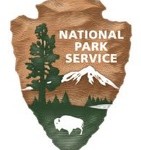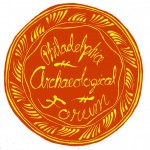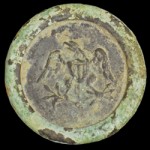Sat. Oct. 13th, 2012 (PAST EVENT) — Part 1: Life in the City and Beyond
Back to October Events and CURRENT EVENT….CLICK HERE
PAST EVENT!!!!!2012 EVENT!!!!! PAST EVENT!!!!
2012 PAST EVENT!!!
EXPLORE PHILADELPHIA’S BURIED PAST!
Part 1: Life in the City and Beyond

(2012 PAST EVENT!) Part 2–Life along the River, Sat. Oct. 20th, 10am-4pm, Independence Seaport Museum, Penn’s Landing
(2012 PAST EVENT!) Print a copy of the program… (pdf)
DIRECTIONS to the NCC
9:00am 

Welcome – Jed Levin, Independence National Historical Park
Welcome – Douglas Mooney, Philadelphia Archaeological Forum
• Archaeology in Philadelphia: Year in Review
A whirlwind tour of projects and other notable developments in Philadelphia archaeology over the past year. (Douglas Mooney)
9:25am Three-Minute ‘Lightening Round’ Talks (#1)
• Looking at a Lot: Changing Spaces and Faces, the National Constitution Center Site in Old City Philadelphia The site of the National Constitution Center was once the location of 115 house lots with hundreds of buildings where thousands of people once lived and worked during the 18th and 19th centuries. One of these lots–the Cresson lot as it has come to be known– tells the story of multiple families and how they adapted the city’s spaces to suit their needs. This talk on this lot will start in the 1770s with a prosperous young man, then work into the 1830s to look at an American matriarch in her final days. (Debbie Miller)
• Caleb’s Alley: The Cresson Brothers and the Development of the City Block Where the National Constitution Center Now Stands The stories of the people who designed and built the streets and neighborhoods of Philadelphia are written in the archaeological remains of the urban landscape they helped to create. This talk explores the lives of Caleb and Joshua Cresson who, in the late eighteenth century, developed part of the block where the National Constitution Center now sits. Their personal history, along with their place in early Philadelphia society, provides insight into how and why this portion of the city developed as it did – a story that provides vital context for interpreting the city’s archaeological heritage. (Alex Keim)
• Betsy Ross’ Pitchers Two pitchers were found in the bottom of a privy pit (outhouse) that once stood in the backyard behind the house where Betsy Ross spent her last years. The pitchers bear images of War of 1812 naval engagements in which the fledgling U. S. Navy was victorious over the mighty British Navy. What did these pitchers mean to their owner? And did Betsy throw them away? (Jed Levin)
• Smokin’ Politics!? A tobacco pipe bowl with a 164-year-old political message was recently discovered in New Castle County, Delaware. The pipe dates to the 1848 election when the Democratic Presidential candidate proposed a compromise stance on slavery. This artifact hints at the politics of one Delawarean living (and smoking!) during a period of contentious and violent debate that ultimately led to the Civil War. (Ilene Grossman-Bailey)
• Lightening Round #1 Questions from the Audience/Discussion and RAFFLE!
9:45 am
• Looking for the West Shipyard Buried beneath a parking lot along the Delaware riverfront lies an important piece of Philadelphia’s history–the city’s original eastern shoreline. During the 17th century, this stretch of waterfront was the site of James West’s shipyard operation. This past summer, an excavation mounted by the Delaware River Waterfront Corporation (DRWC) investigated the shipyard site and recovered evidence of 17th and 18th century wood-working waste, hardware, and multiple large timbers. This presentation presents these and other findings. (Tim Mancl)
• “I am Sorry to Inform You of the Unhappy Explosion…”: Searching for the Continental Powder Works at French Creek, Chester County The powder works and gun factory at French Creek was an important industrial operation during the early years of the American Revolution. In March of 1777, the stamping mill exploded (sabotage perhaps?) and six months later the entire complex was torched by Crown Forces and was never rebuilt. Funded by a grant from the American Battlefield Protection Program, East Pikeland Township is actively researching the ruins of this factory. Geophysical studies and other archaeological methods have recently identified parts of several structures as well as the ‘raceway’ that conveyed the factory’s water supply. (Wade P. Catts, Tim Mancl, and Peter A. Leach)
• Finding the Forecourt at James Logan’s Stenton Recent excavations in Germantown have uncovered a series of wall foundations in the front yard of the historic home, Stenton. These structures are believed to be part of the original Georgian landscape built by the owner, James Logan, in c.1730. This archaeological evidence drastically changes our understanding of the appearance of the house and landscape, forcing us to rethink our interpretation of the site. This talk will discuss the excavation findings from the 2011 season, and provide an update on the current excavation. (Debbie Miller)
10:30 am
Artifacts in the Spotlight Three-Minute ‘Lightening Round’ Talks (LR#2)
• Learning by Osmosis: An “Enhanced” ABC Plate Children’s ABC plates are dishes with an educational purpose. They are decorated with nursery rhymes, moral sayings, and or images of famous places and people. A plate recently excavated from Finland in Bucks County includes letters of the alphabet, numbers to practice counting, the names of the months of the year, and more. Did the children who had this plate ‘eat it up’ — or was the educational message lost amid the food on the plate? (Ken Basalik)
• Dr. Schenck, Seaweed, and Indigestion–How to Cure A 19th-century Stomach Ache Dr. Schenk’s Seaweed Tonic was a 19th century remedy for indigestion. A mixture of alcohol and herbs, the solution was bottled on North 6th Street in Philadelphia where it was sold alongside Dr. Schenck’s other products, Pulmonic Syrup and Mandrake Pills. This talk highlights a Seaweed Tonic bottle fragment recently discovered in a local excavation. (Brian Seidel)
• Jacksonian Buttons Buttons bearing an eagle design and known as Jacksonian buttons have recently been excavated within Philadelphia. What makes these items special? Are they a military or a civilian object? Do these small objects give us a peak into the past during a small window of time? (Amy King)
• Philadelphia Up in Smoke Today most people associate smoking tobacco with a negative connotation. However, it has played an important role in many cultures starting as early as 5000 BCE. It has been utilized by Native Americans in this region for ceremonial and political reasons. (Matt Olson)
• Lightening Round #2 Questions from the Audience/Discussion and RAFFLE!
10:45 am
• Inaugural Presentation of the PAF Douglas Heller Award Established in 2012 by the Philadelphia Archaeological Forum, this award recognizes unusual actions or activities by individuals and or organizations that have furthered the cause of, and support for, archaeology in the city of Philadelphia and its hinterlands. This award was created in honor of Douglas Heller (1955-2012), a member of PAF who also championed the archaeology of the President’s House site at his website USHistory.org, and who developed, and also served as webmaster for, the Philadelphia Archaeological Forum webpages at www.phillyarchaeology.org (2007-2012). At today’s event, the PAF Douglas Heller Award will be posthumously presented to Douglas Heller and will be received by his wife, Nancy Parsons.
• Presentation of the PAF Award of Merit Established in 2012 by the Philadelphia Archaeological Forum, the Award of Merit recognizes individuals and or organizations whose actions have helped preserve, protect, and or educate about the archaeological resources of the Philadelphia area. Today, the following recipients are recognized:
The 2012 PAF Award of Merit is presented to Stephan Salisbury for news coverage that enhances public understanding of archaeology in Philadelphia. Mr. Salisbury’s long-term coverage of both archaeological resources and the issues surrounding Philadelphia’s archaeological heritage have helped develop the public’s understanding of, and support for, the preservation and protection of Philadelphia’s archaeology.
The 2012 PAF Award of Merit is presented to Daniel Crozier for service to the field of historical archaeology in Philadelphia. Daniel Crozier contributed substantively to the development of urban and historical archaeology in Philadelphia through the excavation of seminal sites in Independence National Historical Park, through academic and cultural resource management pursuits based at Temple University, and through his support in the founding of the Philadelphia Archaeological Forum whose mission is to protect and preserve the archaeological resources in the Philadelphia region.
11:00
• Pie for Dinner, Pie for Dessert Among the hundreds of thousands of artifacts discovered by archaeologists during the construction of the National Constitution Center were hundreds of pie dish fragments. The city’s early resident’s often threw these decorated red clay dishes away by tossing them down nearby privies (outhouses). Known as slipwares or slip-decorated redwares, these pie dishes can tell us about the potters who made them as well as about the early citizens who used them. Their designs suggest that there was a regional Philadelphia decorative style. (Juliette Gerhardt)
• Getting to know the Philadelphia Archaeology Legacy: Living in the media, a sneak preview This presentation introduces a self-guided, GPS Augmented Reality walking tour of Philadelphia Archaeology sites developed by Drexel University Digital Media faculty and students. Four sites will be sneak previewed –the Dexter House site, The Dyottville Factory Glass site, the Remer House site and the Hope Farm site. The audience will be invited to take out their smart phones to download the free Augmented Reality Program Junaio available at http://www.junaio.com/. Once loaded, the audience will be invited to view the Dexter House archaeology project located on the grounds of the NCC as they exit the day’s event. (Glen Muschio, Mark Petrovich, Jason Kirk, Joe Tomasso)
12:00-1:30pm LUNCH LUNCH LUNCH LUNCH
1:30pm
Welcome
• Cultural Amnesia: When no one lives to tell the tale Have you ever walked down a familiar street with your grandparents and asked them what the neighborhood was like when they were a kid? Or whether they remember hearing a story from their grandparents? Historical societies and preservation groups are using GIS computer technologies (geographical information science/geospatial information studies) to help us remember these pasts. The technology is also helping communities manage and protect their historical landscapes. This talk presents projects involving a stage coach stop in Bucks County slated for demolition, two small local hospitals which are forgotten and hidden in plain sight, and a military encampment. (Kevin Donahey)• Marbles, Buttons, & Pipes: Objects of Identity Small personal items–marbles, buttons and tobacco pipes– possess great power in archaeology due to their direct connection to persons living in the past. Individuals consciously purchased, used, and discarded these objects and, as a result, they can reflect elements of their owners’ identity. Drawing upon artifact collections recovered from three Philadelphia archaeological sites, this talk demonstrates how such small everyday items reveal bigger personal histories. (Deirdre Kelleher)
• Urban Re-perfection and the Destruction of the Past: Seventies and Eighties Archaeology in Philadelphia
This is the tale of a young classical archaeologist changing his career goals as he discovers the lost underground treasures of a modern American metropolis forty years ago. There are notable triumphs and sadly, many tragedies in this survey of the archaeological researchers and archaeological sites of seventies and eighties-archaeology in Philadelphia. (Dave Orr)Ask the archaeologists – Questions and Answers about Philly Area Archaeology
3:00pm End of Program
Co-Sponsored by the Philadelphia Archaeological Forum and Independence National Historical Park
HOSTED BY THE NATIONAL CONSTITUTION CENTER
October is Pennsylvania Archaeology Month!
Join us for “Part 2–Life along the River”, Sat. Oct. 20th, 9am-3pm, Independence Seaport Museum, Penn’s Landing!!
by admin
